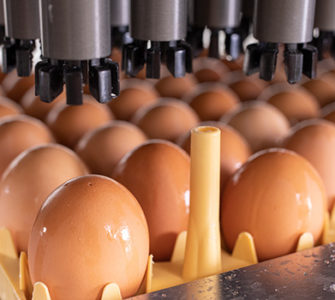Infectious bursal disease: ‘It’s never black and white’
Daral Jackwood, PhD, a professor at Ohio State University, is best known in the global poultry industry as the go-to expert on infectious bursal disease (IBD). In a far-ranging interview with Poultry Health Today, he talked about how IBD variants emerge, vaccine selection, viral shedding and the spread of the virus, the merits of vaccine rotation and special considerations for antibiotic-free production schemes.
Watch the full interview
Part 1: Why the focus on IBD?
Jackwood said he started his graduate career studying bacterial diseases of poultry. It was clear to him early on that IBD viruses led to immune suppression that exacerbated other diseases. “I got interested in what causes immune suppression in poultry… and I just carried that over into my career,” he said.
Part 2: Understanding IBD variants
In the 1980s, it was discovered that genetic variants of the IBD virus weren’t controlled with current vaccines. That became the definition of a variant virus.
Although some vaccines were made for variant IBD viruses, more new variants were springing up and it became clear the industry wasn’t going to win the battle with conventional vaccines, he said.
The very virulent IBD viruses also came onto the scene in the 1980s, emerging first in Europe and eventually around the world.
Jackwood notes that the terms used to describe IBD viruses can be very confusing but said there are three major designations. There are classic IBD viruses — the ones first isolated in Gumboro, Delaware in the 1960s. The second group are the antigenic variants isolated in Delaware in the 1980s. The third group are the very virulent IBD virus strains first seen in Europe.
However, there are a range of viruses within each of those three groups. “So, it’s not black and white. It’s much more gray than that,” he said.
Part 3: IBD: Matching vaccine to variants
“With vaccine programs, the key thing is getting the antigenic strain of your vaccine to match with the antigenic strain of the field virus that’s causing the disease problem,” Jackwood said.
The antigenic differences are critical. If the vaccine strain doesn’t match the field virus, the vaccine will not protect birds.
Part 4: Planning your IBD vaccination program
Protecting very young birds is a must. “That first 2 to 3 weeks of life are critical, because that’s when the virus is infecting the B-lymphocytes and causing the immune suppression,” Jackwood explained.
To keep young birds from becoming infected, the industry vaccinates breeder flocks to provide maternal antibodies to their broiler progeny.
However, maternal antibodies wane, so it’s important to also vaccinate broilers to help protect them, Jackwood said.
Previously, live attenuated vaccines were used, but timing of vaccination could be problematic due to maternal antibodies. The advent of herpesvirus (HVT) vaccines that express the bursal disease virus VP2 gene have changed everything. They can be given while maternal antibodies are high, and provide good cross-protection as the birds get older, he said.
Part 5: Viral shedding and the spread of IBD virus
IBD viruses are transmitted via the fecal-oral route. Eventually, birds are going to shed the virus in feces. In a study Jackwood previously conducted, he said he found the virus is only shed for a short period of time, but it’s shed in very large numbers.
The HVT recombinant viruses stay in the bird for a fairly long period of time, stimulating the immune system with no virus to shed, so they are a good solution to the problem, he said.
Part 6: Should you rotate IBD vaccines?
Rotating vaccines might make sense if producers don’t know what field virus is circulating, Jackwood said. If there is uncertainty about whether it’s a classic or variant virus, then rotating vaccines is probably a good idea and may ultimately improve flock performance — when the right vaccine is found.
However, performing diagnostics is a more scientific and effective method. Once producers know what the field virus is, they can look for a close vaccine match. The virus is well enough known that the key amino acids can be sequenced and matched to vaccines.
In the fall, some producers need to use a recombinant vaccine to protect against other pathogens, such as Newcastle disease, and two recombinant vaccines can’t be used at the same time. In these cases, a live-immune complexed IBD vaccine can be administered to provide protection as maternal antibodies wane, Jackwood noted. They have a live attenuated virus complexed with an antibody.
There are still companies that use live attenuated virus vaccines, but the trick is to get the timing just right after carefully tracking maternal antibody levels, he said.
Part 7: Special considerations for ABF-production
In flocks raised without antibiotics, “Bursal disease is probably the primary cause of immune suppression that we’re seeing in the field right now. That immune suppression leads to secondary infections — opportunistic pathogens — and there’s plenty of them in the respiratory system and the gut of poultry,” said Jackwood.
Once the birds become immune-suppressed, other pathogens start growing, leading to a multitude of conditions such as airsacculitis, Clostridium, Escherichia coli and many other problems, which in the past were handled with antibiotics. That can’t be done in antibiotic-free production, so it becomes critical to stop immune suppression and prevent the birds from becoming infected with secondary agents, he concluded.
Posted on October 20, 2017

















